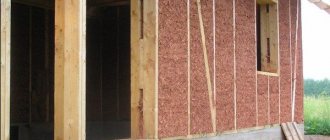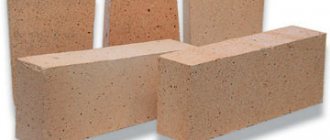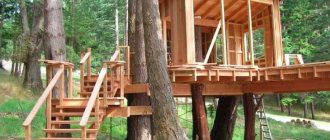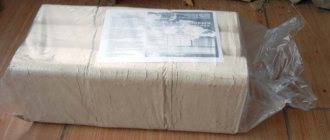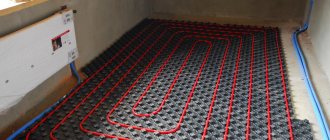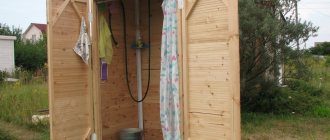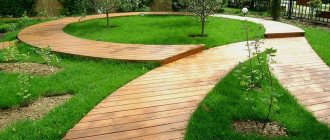The problem of industrial waste disposal did not arise today. If we talk about sawdust, then they can find many uses instead of simply being thrown into a landfill. Among them there are those that, if managed correctly, can bring a stable income. So, closer to the body, as Comrade Bender said.
@youtube.com, Peasant channel
- Paths
- Heating
Sawdust flavoring
Due to its excellent absorbent properties, sawdust can be used as a natural flavoring agent. There are two options on how to do this:
- if you have juniper or pine sawdust, pour it into a fabric bag and tie it tightly with a ribbon;
- Soak sawdust from any tree with essential oil and place it in a jar or bag, tie it or cover it with a lid.
Place sachets with fragrant sawdust in the closet where clothes and linen are stored, or place them in the room.
Step-by-step instructions for starting a sawdust processing business
For a business to be profitable, it is important to take into account all the conditions on which the implementation of a business project depends. First of all, you need to draw up a competent business plan.
Drawing up a business plan
What should be included in a business plan:
- determining the amount of start-up capital, searching for sources of investment, the possibility of lending;
- channels for obtaining raw materials;
- description of the production premises;
- list of machine equipment, the possibility of its purchase, transportation and installation;
- registration of an enterprise, choice of ownership form (individual entrepreneur or LLC) and taxation system;
- staffing schedule;
- terms of launching the enterprise into operation;
- marketing plan and sales channels for finished products;
- risk analysis.
Selection of raw materials
Production will be most profitable if the raw material base is located close to the enterprise. In addition, this will allow for uninterrupted supplies of raw materials. The source of raw materials can be:
- furniture factories,
- sawmills, sawmills;
- woodworking factories.
In such industries, sawdust is considered waste, its cost is 50-100 rubles/m3; to obtain raw materials, you need to organize pickup. If wood processing plants are located at a remote distance, evaluate the feasibility of the idea. Transport costs have a significant impact on the profitability of production, and the final product may not be competitive.
Preparing and arranging the premises
To process sawdust, you will need a room in a permanent building with an area of at least 150 m2. It should house a processing workshop, a storage area for raw materials and finished products, as well as household and utility rooms. Production will require communications, including 3-phase electrical networks from which the machines operate.
When equipping production areas, it is necessary to observe electrical safety measures and have primary fire extinguishing equipment.
Necessary equipment for sawdust processing
Technical equipment is the most significant expense item, which includes the cost of purchase, installation and commissioning of machines. Depending on the profile of the processing shop, it can be equipped with the following types of machine tools:
- semi-automated lines for the production of finished products;
- crushers, mixers, dispensers;
- drying units;
- presses (hydraulic, screw, shock-mechanical), granulators;
- storage bunkers, cyclone devices;
- conveyors, packaging machines, etc.
The choice of equipment depends on the profile of the enterprise. The total machine park can cost from 2 to 10 million rubles. To reduce costs, you can purchase used equipment or lease machines.
Hiring staff
One of the advantages of the business is the simple management of technical equipment , which does not require special training for operating personnel. Therefore, finding workers to service the machines will not be difficult. You will need one equipment adjuster, several foremen to service the machines, a warehouse worker, a driver, and possibly several general workers.
The staffing table is drawn up taking into account the productivity of the machines and the specifics of production.
You will need an accountant to maintain financial records. Compliance with sanitary and hygienic standards is ensured by a full-time cleaner.
Search for clientele and ways to market products
The company's clients can include individuals, owners of cottages and country houses, as well as organizations (boiler houses, factories that use heating technology, construction companies, etc.).
As a rule, the bulk of the profit comes from wholesale buyers, so you need to look for them especially actively.
To do this, you can participate in exhibitions in your region, connect social networks and the media. If the company has the opportunity, you can hire a sales representative who will promote finished products on the market and look for interested customers. It is important to find distribution channels in advance.
Registering a business, obtaining licenses and permits
Production specializing in the processing of wood waste is classified as a small business. Therefore, it is more advisable to register a business as an individual entrepreneur . It makes sense to register an LLC if an entrepreneur plans to open a large production facility, or if the company has several founders.
Law No. 99-FZ “On licensing of certain types of activities” does not include enterprises engaged in sawdust processing in the list. Therefore, such activities do not require licensing.
If a business is registered using the individual entrepreneur system, to complete the documents you will need an application to the tax service, photocopies of your passport and a receipt for payment of state duty. To register an LLC, you will need a company charter, as well as a decision of all founders and organizers of the business.
Growing mushrooms on sawdust
Did you know that oyster mushrooms can be grown in the most common sawdust? The substrate is prepared from large hardwood sawdust and straw (you can use feed or sunflower seed husks), mixed in a 3:1 ratio. The components must be processed: soak the mass in hot water for 3-7 hours, maintaining a temperature of 60°C.
Then, when the substrate has cooled, it needs to be squeezed out and placed in layers in a thick transparent plastic bag, sprinkling each layer with crushed mycelium. Several small holes are made in the bag. With proper care, mushrooms will grow in 40-45 days.
Smoking kits
The costs of running a business producing sawdust for smoking will be minimal. In principle, they can be reduced to printing labels and packaging goods. Difficulties arise only with finding the necessary sawdust; deciduous trees are required, preferably fruit trees like cherry or pear, but aspen, alder and juniper will also work. Coniferous and birch ones are absolutely not suitable; they spoil the appearance of the dish and give it a bitter aftertaste.
The demand for such products is constantly growing, and more and more Russians are acquiring their own smokehouses. People unite in online communities of interests, where they can offer products.
Waste from wood processing enterprises is a valuable and multi-purpose material that has wide practical applications in the household. Wood shavings have many useful properties, as a result of which their processing can become a business that generates good income. At the same time, environmental and everyday human needs will be satisfied.
Sawdust compost
Sawdust is used as fertilizer for many plants. There is one “but” - fresh sawdust cannot be used, as it will “pull” the nitrogen necessary for crops to grow from the soil. The way out of the situation is to prepare compost from sawdust.
If the compost is “filled” with sawdust, this will speed up its maturation. Sawdust improves the structure of the compost: they make it looser and increase air permeability. Another “plus” is that such compost will warm up faster in the spring. At the beginning of summer, start a compost heap, laying out sawdust (10 kg) in layers. Each layer must be shed with water in which fertilizers are dissolved:
- 130 g urea;
- 10 g superphosphate;
- 70 g potassium chloride.
Also, each layer needs to be sprinkled with lime (150 g of lime will be needed for a pile 1.5 m high). When the compost is ready, it is added to the soil at the rate of 2-3 buckets per 1 sq.m. The optimal time to add compost is late summer.
- How to make the right compost for feeding plants
Fertilizing the soil is an important part of plant growing activities. And compost is considered one of the leaders in the “world of fertilizing”.
Sawdust mulch
This natural material is used to mulch beds, soil under berry bushes, tree trunks, etc. For mulching, you can use semi-rotted or rotted sawdust.
Since fresh sawdust is harmful to plants (they absorb nitrogen from the soil), they need to be prepared before use: pour 3 buckets of sawdust, 200 g of urea and 10 liters of water onto a spread film in layers. The top of the sawdust is covered with a film and pressed down with something heavy. After 2 weeks, the sawdust can be used.
Lay out rotted sawdust in a layer of 5-10 cm. Mulching with sawdust helps control weeds and helps retain moisture in the soil.
- How to mulch in the fall - options for every taste
We offer 10 options for autumn mulch, thanks to which your heat-loving plants will cope well with the winter cold.
Sawdust for smoking
If you are the happy owner of your own smokehouse, then you probably know that sawdust is an excellent material for kindling.
Sawdust from alder, oak and fruit crops: apple, cherry, apricot, sea buckthorn are best suited for a smokehouse. But the most unsuitable trees, the sawdust of which should not be used for these purposes, are aspen and conifers.
Sawdust for smoking must be of high quality, so before use, make sure that there is no mold or traces of chemical treatment on it. Soak the sawdust in warm water for 4-5 hours, then dry (optimal humidity 50-70%).
- Smokehouse in the country - choose the appropriate option
Can you imagine a day outside the city without smoked fish or a piece of meat? Especially if these “delicacies” are obtained using a personal smokehouse?
Advantages and risks of sawdust processing business
Having decided to organize production for processing wood waste, you need to objectively assess the pros and risks of this business. The advantages of production include:
- A large selection of processing equipment, with the opportunity to purchase new production lines or buy inexpensive used semi-automatic units.
- Simple technology and no need for special training of operating personnel.
- Low price of raw materials, which, subject to regular pickup, can even be obtained for free.
- A wide market, the possibility of long-term cooperation with both individuals and organizations that consume processed sawdust in the production process.
Among the difficulties of such production is the seasonality of work when it comes to processing sawdust into fuel, as well as dependence on the raw material base. Therefore, experts advise registering a business after concluding a contract with suppliers of raw materials and wholesale buyers of finished products. You also need to be prepared for high competition in the fuel market.
Purchasing cheaper used equipment has property risks - breakdown of installations will cause production to stop. Therefore, it is worthwhile to provide for the possibility of promptly performing repair work and storing running spare parts in a warehouse.
Sawdust for garden paths
A garden path made from sawdust is a simple, cute and convenient way to decorate your garden. Dig a shallow trench of any shape (about the size of a shovel), fill it with sawdust and compact it. The advantages of such a track:
- it can be made as winding as desired;
- water will not stagnate in it;
- Weeds will not soon break through the sawdust.
Keep in mind that over time, the sawdust in the path will sag, so you will have to add it every year.
- 16 ideas on what you can use to make a beautiful and practical garden path
A large selection of interesting and simple options for garden paths.
Sawdust for warm beds
Sawdust is useful for constructing organic trenches - the so-called warm beds. In such beds, plants are very comfortable, they receive more nutrients. A layer of scalded sawdust is laid out at the bottom of the trench (depth 40-50 cm), covered with a cloth and watered with a pink solution of potassium permanganate.
The next layer is plant debris (for example, foliage, plant tops), which are sprinkled with ash (1-2 cups per 1 sq.m.). Then a mixture is poured into the trench, which includes humus or peat (5-6 buckets), sand (1 bucket), 1 tbsp. urea, 2 cups of ash, 1.5 tsp. boric acid, 1 tbsp. superphosphate, 1 tsp. potassium sulfate, 1 tsp. zinc sulfate.
- Do-it-yourself warm beds - step-by-step instructions with video
Detailed and visual recommendations for creating warm beds in your garden.
Sawdust as a substrate
Sawdust will make the soil looser, which means more oxygen will flow to the roots of the plant. For the substrate, you need to take old sawdust or add urea to fresh ones (for 1 bucket - 40 g of fertilizer). This will prevent the sawdust from taking nitrogen from the plants. To prepare the seedling substrate, mix the following ingredients:
Mixture 1: sawdust, lowland peat, river sand (in a ratio of 1:2:1).
Mixture 2: sawdust, garden soil, lowland peat (1:1:2).
To the finished mixture (per 10 liters of substrate) add 40 g of double superphosphate, 1/2 cup of ash, 15 g of ammonium nitrate and 40 g of potassium sulfate.
Comparison with other types of materials for creating permanent formwork
The main competitors of ShchCP Velox in the creation of permanent formwork are:
- DSP;
- Styrofoam;
- glass magnesite sheet (GML);
- Durisol blocks.
If we compare SCP and CBPB, then both materials are the same in all main characteristics, because the only difference between them is the size of wood waste.
The exception is chip-cement slabs made with the addition of liquid glass - they are much inferior in vapor permeability, which is why the walls of the house stop transporting excess moisture to the street. Adding polystyrene foam makes this situation worse, causing the home's ventilation requirements to skyrocket.
The main advantage of polystyrene foam is its low price and good thermal insulation properties, however, due to its low strength, such formwork must be sheathed with some kind of sheets, at least from the inside.
SML is somewhat denser than ShchCP, and is also supplied in sheets 2–2.5 m long and 1.2–1.25 m wide, so it is noticeably more difficult to work with. In addition, you will have to use not only overhead fasteners, but also fasten them with through ties, which, after the concrete has hardened, will have to be covered with additional finishing, because if they are cut, there is a high probability of the LSU peeling off from the concrete.
Despite the fact that Durisol blocks are made of the same material as Velox slabs, their application and influence on the speed, and often the result of construction, are very different.
Finished blocks do not need fixing jumpers, because they themselves are such jumpers.
In addition, peeling off the foam glued into them does not lead to problems, because it is securely pressed on all sides.
Therefore, the construction of Durisol formwork requires much less time and materials. At the same time, in terms of the main operational characteristics, Velox slabs and Durisol blocks are completely identical, because they are made of the same material.
DIY sawdust concrete
This environmentally friendly, durable and frost-resistant material is used for the construction of houses and country houses. To make it you will need a concrete mixer. The sawdust is dried and sifted through a sieve with 1x1 cm cells, then mixed with cement and sand. Next, you need to add limestone or clay dough to the mixture and mix, pour water in several stages (after each portion, the mixture needs to be mixed).
Amount of ingredients for medium-density sawdust concrete: 20 kg of sawdust, 20 kg of sand, 10 kg of cement, 15 kg of lime (clay).
How can you use sawdust?
Sawdust is a unique material that has many of the properties of wood . Therefore, such material is in great demand in:
- fuel production;
- production of building materials;
- home and agriculture;
- repair and construction work.
Fuel production
Various types of fuel are obtained from sawdust, among which the most famous are pellets and briquettes .
These types of fuel can be used for conventional boilers, stoves or fireplaces, but the maximum effect is achieved only in automatic heating devices .
After all, all elements of one batch are identical in size and shape, thanks to which automatic fuel supply systems can dose them more accurately. Read more about these types of fuel here.
Another popular type of fuel is a mixture of various alcohols , which is obtained from fermented sawdust.
This material is mixed with a sulfuric acid solution and heated under pressure, causing the cellulose to break down into simple sugars that can be fermented.
After fermentation is complete, the mass is passed through a distiller, resulting in alcohols of various qualities .
Read more about this use of sawdust in a separate article.
pyrolysis gas is obtained from sawdust , suitable for use in heating and kitchen stoves, as well as in hot water boilers and other natural gas-powered equipment.
In terms of calorific value, pyrolysis gas is much inferior to natural gas, but, due to the minimal cost of its production, heating with pyrolysis gas is often cheaper than with natural gas.
Read more about this gas, the method of its production and use here.
Manufacturing of building materials
Sawdust is used to produce building materials such as sawdust concrete.
Compared to ordinary concrete, this material is noticeably lighter, and also has lower thermal conductivity , so a house built from it loses less heat, which means you will have to spend less on additional insulation.
In addition, wood in concrete improves the vapor permeability of walls , due to which such houses always have optimal humidity, because its excess goes through the walls to the street.
You can read more about this material here.
Another popular material made from sawdust is wood concrete. In many ways it is similar to sawdust concrete, but it also has differences. After all, the mixture for pouring wood concrete is prepared without adding sand, that is, by mixing cement, sawdust and water.
In addition, this material is lighter and stronger than sawdust concrete, although it is much more expensive. You can read in more detail about the production and use of wood concrete in this article.
insulation and finishing materials are made from sawdust :
- Fiberboard (fibreboard);
- Chipboard (chipboard);
- organic insulation.
Fiberboard is used for finishing walls, ceilings and floors, as well as for lining the interior of cabinets .
On the basis of fiberboard, a popular finishing material is made - hardboard, which differs from fiberboard by the presence of a decoratively treated side. Chipboard is used to create furniture and many other works.
Organic insulation is only slightly inferior to mineral wool, but environmentally friendly , because its basis is paper obtained from sawdust.
Household and Agriculture
Sawdust is an excellent material for feeding various animals . This applies to both pets, such as hamsters, parrots or cats, and various livestock.
The material for backfill is chosen based on many factors, one of which is smell, because fresh sawdust has a strong smell, and not everyone likes it.
For more information on how to choose bedding, read the article (Sawdust for pets).
Another use for this material is mulching the ground around plants.
Bare soil quickly loses moisture, overheats and cools, causing plant roots to suffer. By filling the soil around the plant with waste from sawing wood, you will protect the roots, which will make the plant better able to withstand winter cold and summer heat, and it will also be possible to water it less often.
Wood sawing waste is an excellent material for growing mushrooms and creating high-quality fertilizer . Mushrooms receive enough nutrition from them to multiply quickly, and the cost of such food is low, and you can often get it for free.
Sawdust also produces good humus , which saturates the soil with nutrients and increases plant productivity.
To learn more about this method of using wood sawing waste, read the article (Fertilizer from sawdust) . It is also very convenient to cover paths between beds in fields, vegetable gardens or greenhouses with sawmill waste.
Even after heavy rains, you can walk along such paths without getting smeared with mud , so you can check the plants after a rainstorm.
Once every few years you will need to plow the garden or field so that the sawdust is evenly distributed over the ground and fertilizes it.
Repair and construction work
The main use of sawdust during repair and construction work is various insulation .
They are poured between thin wooden walls, due to which, at minimal cost, the thermal conductivity of such a wall is comparable to the same parameter of a wall made of timber of the same width.
That is, with a wall width of 20–30 cm, insulation will be required only in the northern regions.
In addition, wood sawing waste is mixed with clay and the resulting solution is used to insulate ceilings, floors and brick walls.
The effectiveness of such insulation is much lower than that achieved by using mineral wool or polystyrene foam , but the thickness of the layer can be increased, which results in significant savings.
The same compositions are made on the basis of lime or cement, which act as a binder. Read more about all the methods of insulation using wood sawing waste here (Insulation with sawdust).
Crafts from sawdust
Sawdust is an excellent material for children's (and not only) creativity. You can sculpt figures from sawdust by preparing dough for this (2 cups sawdust, 1/2 cup starch, 1/2 cup water, 5 tbsp PVA glue, 1 tsp vegetable oil). You can also decorate a plasticine figurine with large sawdust, making, for example, feathers for a bird: carefully stick the sawdust into the figurine, creating “plumage.” Small sawdust can be painted in different colors and made into a picture by gluing it onto cardboard.
Frequent manufacturing errors
Negative reviews about chip concrete that can be found on the Internet are most often associated with mistakes made during the preparation or use of this material.
Next we will talk about the most common of them.
Ignoring superplasticizers and hydrophobic additives
Quite often, users ignore and do not use superplasticizers.
These substances reduce the amount of water required to create a solution of the required viscosity, thereby increasing the strength of hardened concrete.
The addition of superplasticizers is desirable when pouring blocks, because it increases their strength, and is necessary when pouring monolithic walls.
Concrete with this additive is more plastic and fills the formwork more easily with the same amount of water.
By ignoring hydrophobic additives, the amount of moisture that enters the wood increases, so even filling the pores with minerals cannot reduce water absorption to a safe level. Often they refuse additives because they are afraid of reducing vapor permeability, but they do not affect this parameter.
Steam moves through the particles of cement stone at a very low speed, so the vapor permeability of chip concrete is always lower than this parameter of wood and is on the same level as brick or concrete. The addition of hydrophobic additives reduces vapor permeability by 2–5%, so it does not have any serious effect.
Selecting chips and neglecting to soak them
A common omission is also the incorrect choice of chip type. It is a mistake to use shavings from “sweet” wood species. Such species include birch, maple, willow, alder, and fruit trees.
Lime partially neutralizes the negative effects of sugars, but there is too much glucose in sweet rocks. But conifers contain little sugar and lime almost completely blocks this negative effect.
In addition, the shavings are not pre-soaked in lime milk. This operation is not performed to disinfect wood waste, its purpose is to fill the pores with minerals, due to which the wood’s ability to absorb water is reduced, and therefore increases:
- concrete strength;
- load bearing capacity;
- life time.
Sand and water
It is also a mistake to use smooth, fine sand.
The larger the sand and the more uneven the shape of each grain of sand, the harder it is to work with, but also the higher the strength of concrete. After all, cement laitance quickly slides off smooth sand, while on an uneven surface it lingers until it hardens.
And an increase in the amount of water makes concrete more convenient to work with, but weakens the cement stone, as a result of which the strength of the block or wall decreases.
Neglect of wood resin foam
For insulating boards, a decrease in the thermal conductivity of cement stone is more important than a certain loss of strength due to the transformation of cement stone into an analogue of a sponge, because these boards are not used as load-bearing elements.
The addition of foam and other reagents increases the thermal insulation properties of the slab by 5–15%, which brings its thermal efficiency closer to mineral wool and polystyrene foam.
Poor quality exterior finishing
It is very important not to forget about high-quality external finishing of chip concrete. Adding hydrophobic additives and filling the channels with minerals reduces the sensitivity of wood to water vapor, but contact with water produces too much moisture, which saturates the concrete and causes wood waste to expand
When transitioning from a liquid to a solid state, the volume of water increases by 11%, so the higher the humidity before the onset of frost, the stronger the impact on the cement stone when the water freezes inside the wood.
Plastering with sawdust
Sawdust plaster is also called warm plaster. With its help, you can insulate the slopes of window and door blocks, finish internal walls, as well as facades. In addition, warm plaster insulates noise well. You will need paper pulp (such as shredded old newspapers), cement and sawdust. The ingredients are mixed in a ratio of 2:1:3 and diluted with water, after which they are thoroughly mixed again.
We hope that our material was useful to you. Perhaps our list is missing an interesting way to use sawdust in the country that you know about? Share in the comments!
Payback period
The payback period directly depends on how well you organize your business and how you work. It’s impossible to give exact numbers here, since the starting data is unknown, but in general, the profitability of this business is 30–40%. Let's consider an example of launching pellet production. The total launch costs are 1.3 million rubles. With proper organization and sale of 100% of finished products per month, you will earn about 150 thousand net, minus wages and taxes. Thus, all expenses made will pay off within 8–9 estimated months, but in fact the payback is delayed for 11–12 months, after which the enterprise begins to generate a stable profit.
A delay of 2–3 months in payback is due to the fact that you are unlikely to be able to sell all the products immediately, there will be overlaps and delays in the process, problems with employees will arise, some equipment will break down, etc. If we consider the production of filler for cat litter made from sawdust, then the payback will occur in about 5-6 months, only the profitability of this business is approximately 40-60 thousand per month net. If we talk about insulation, then the payback is virtually instantaneous, from the first order. Essentially, you simply deliver the raw material to the site, mix it with lime and other antiseptics, and pour it between the walls. When producing chipboard-fibreboards, payback usually occurs in 15–18 months, and average monthly earnings are about 150 thousand rubles. In the production of building materials, payback occurs in 3–5 months with average earnings of 40–60 thousand rubles.

